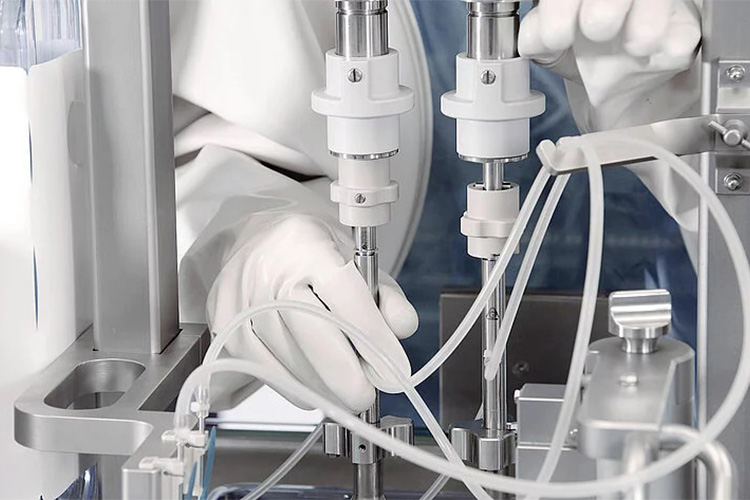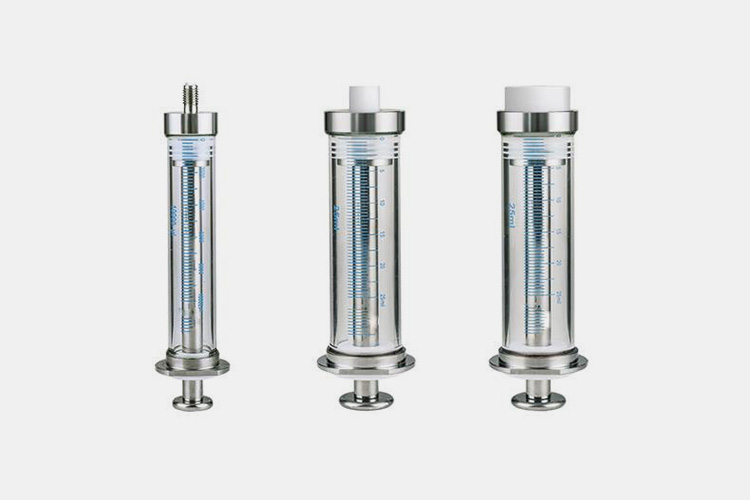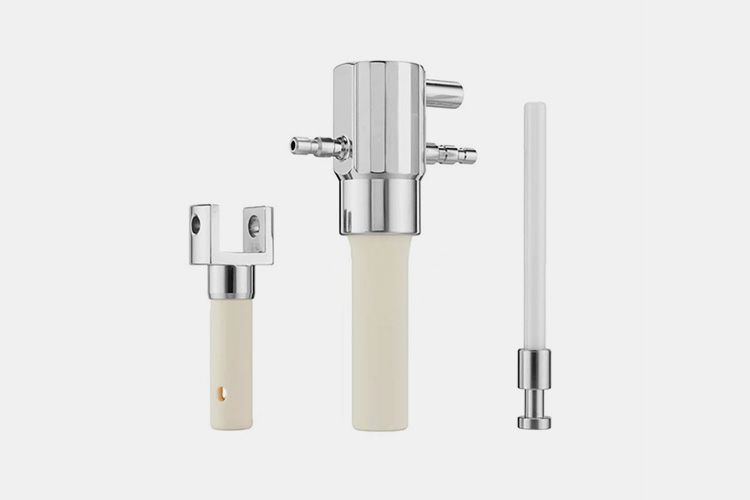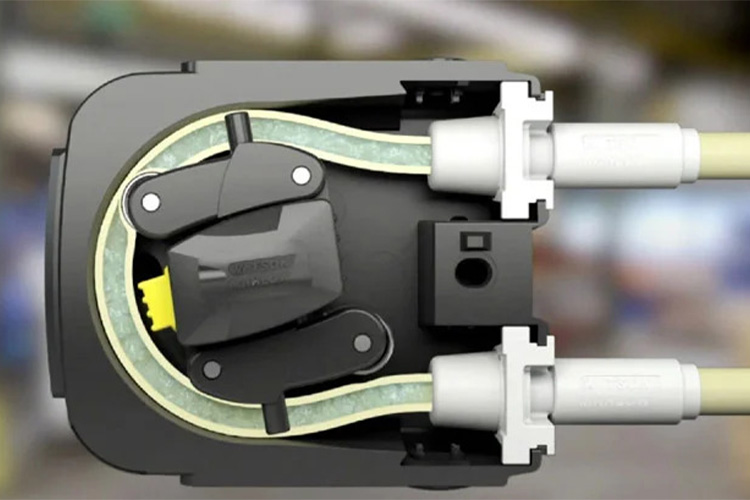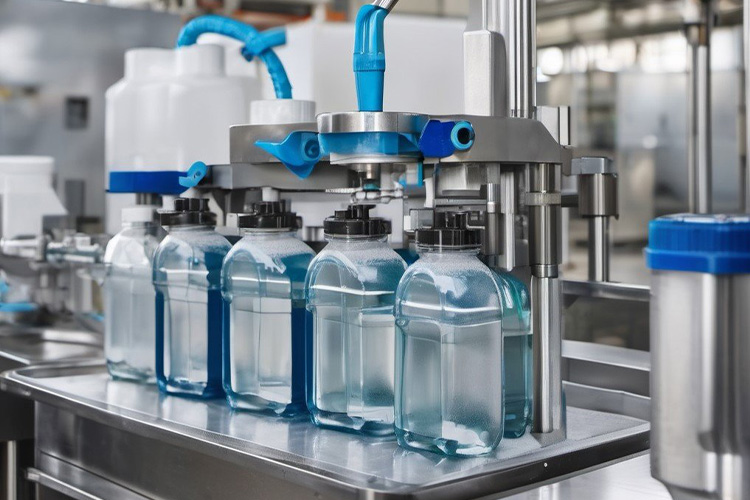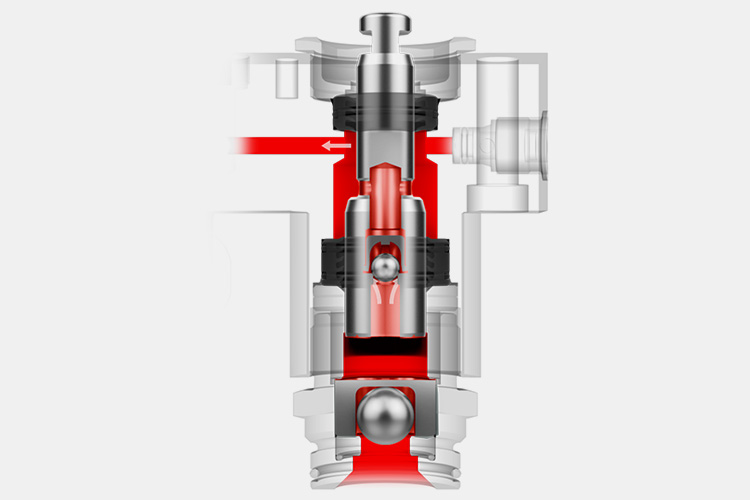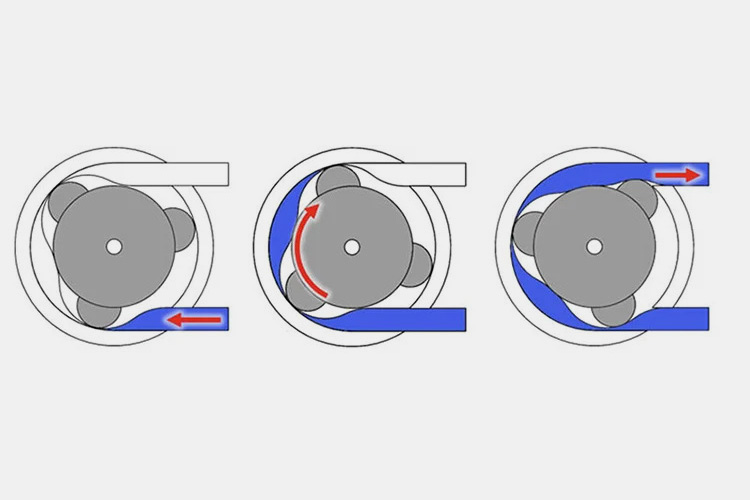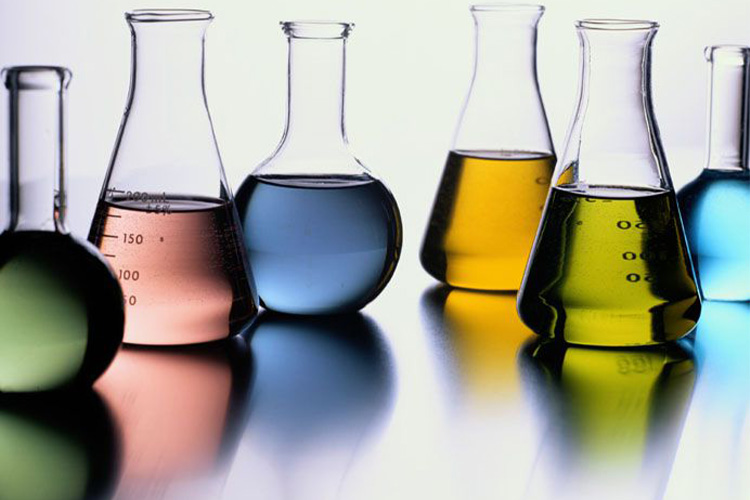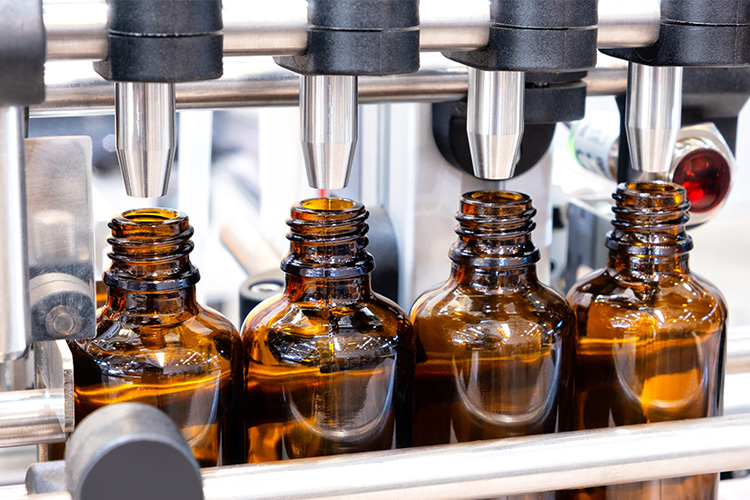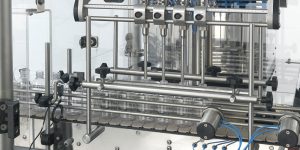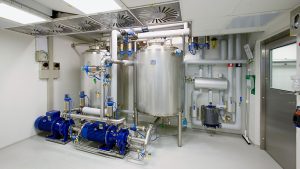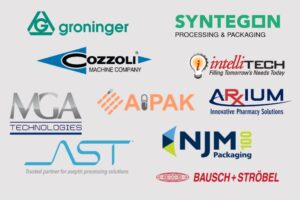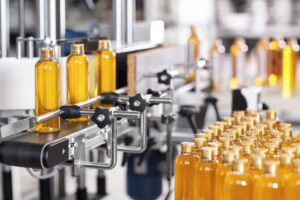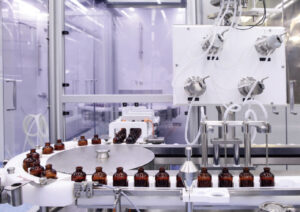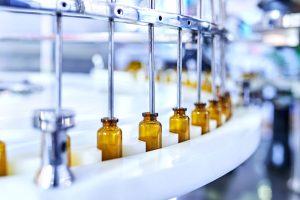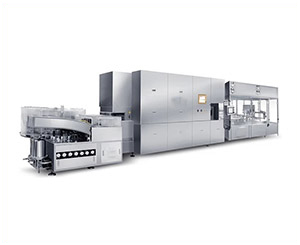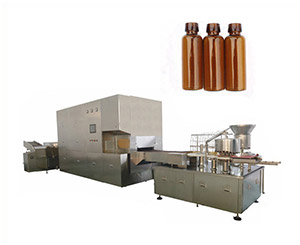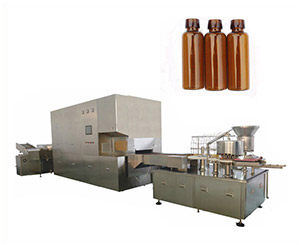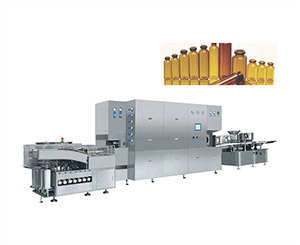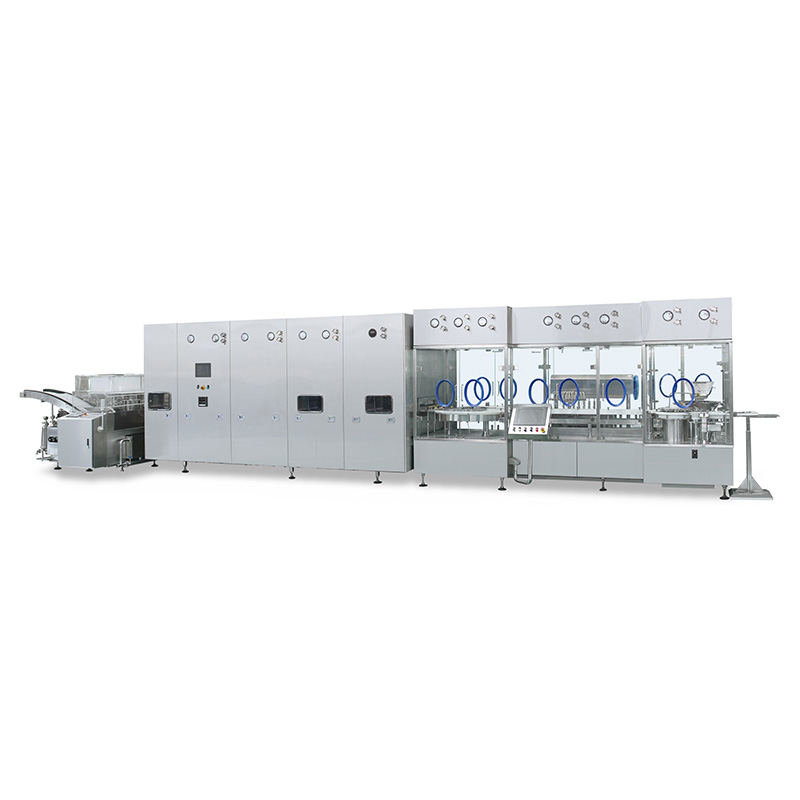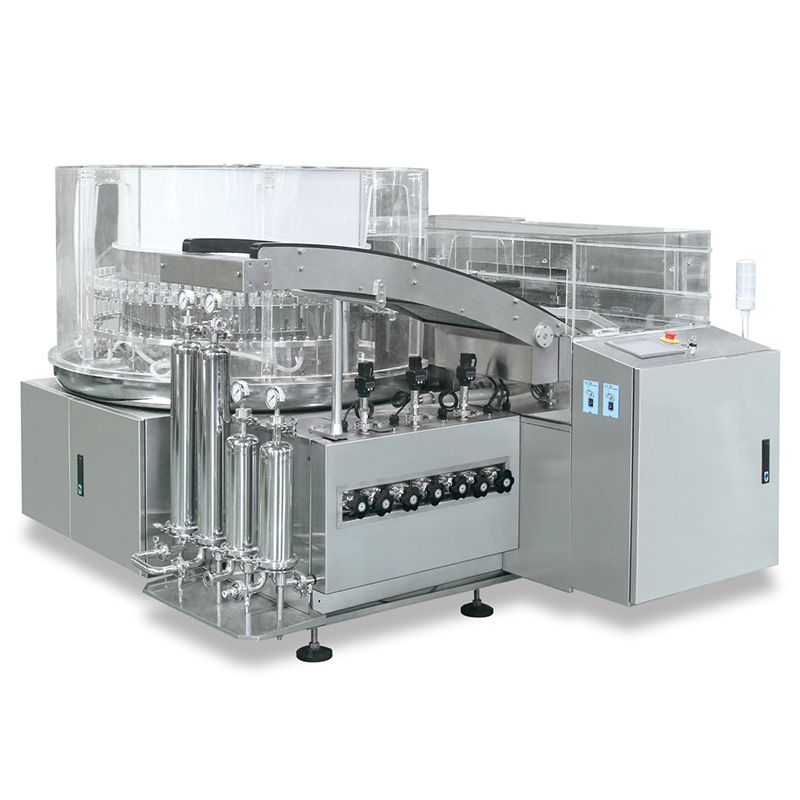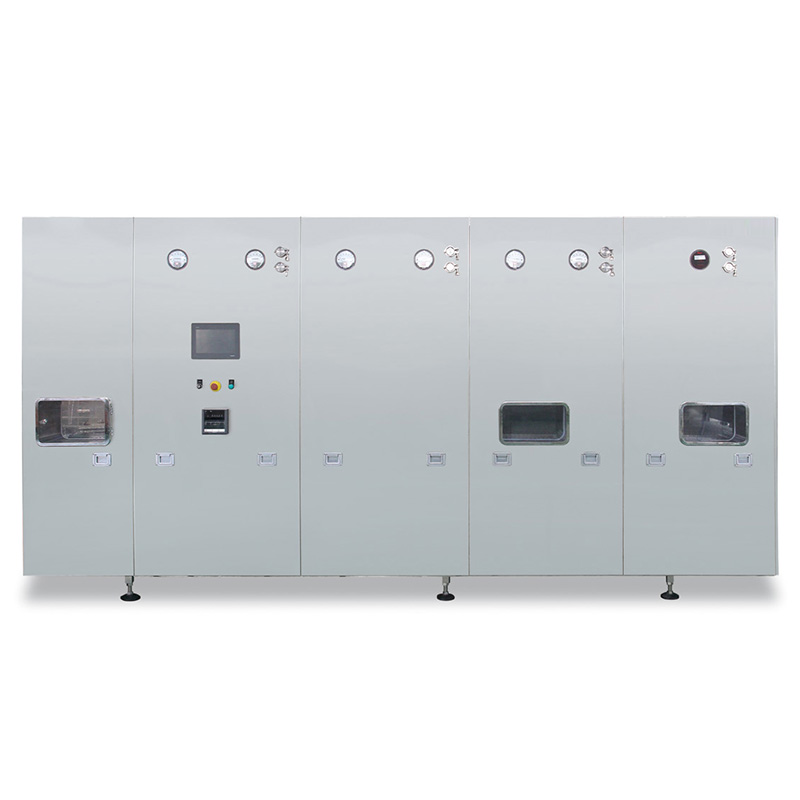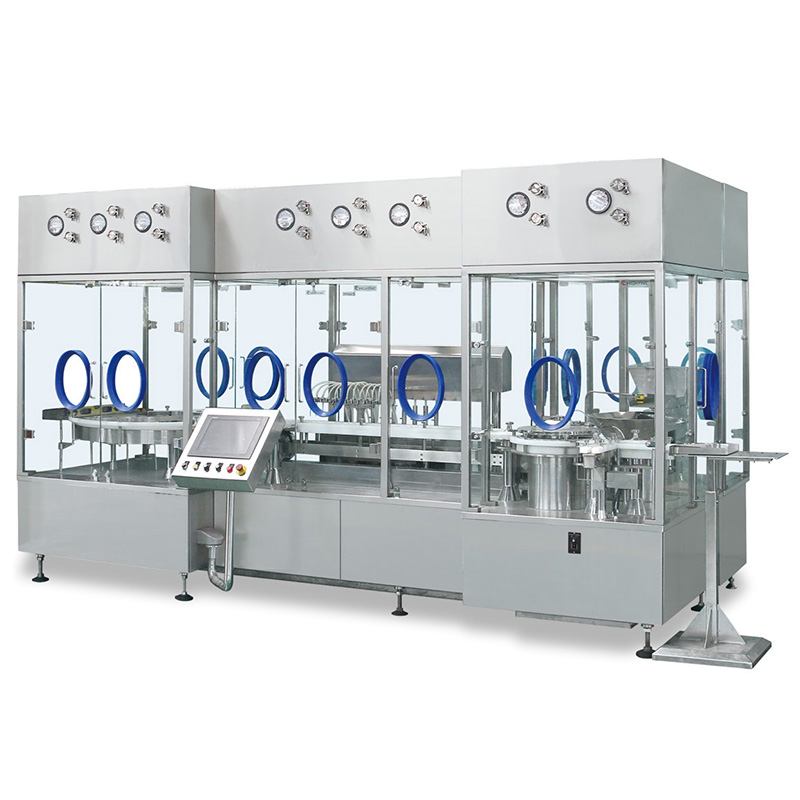Understanding Different Types of Liquid Filling Pump
As an important equipment on modern production lines, liquid filling pumps have a wide variety of types and functions, which can meet the filling needs of different industries and products. During filling, the pump can achieve high-speed and full speed filling in a short period of time to ensure filling speed.
Different types of pumps have different performance and applicable scenarios. Therefore, understanding the characteristics and selection points of various pumps is of great significance for improving filling efficiency and ensuring product quality. Do you know which types of liquid filling pumps there are? Do you have any knowledge about their performance and filling accuracy?
Well, let’s explore different types of liquid filling pumps together.
1.What Is the Liquid Filling Pump?
Liquid Filling Pump - Sourced: Groninger
Liquid filling pump, as a key part of liquid filling machine, is a equipment specifically designed for liquid filling and transportation. This equipment serves as an important part in industrial production, because it can accurately deliver liquids to designated containers, such as glass bottle.
In fact, pharmaceutical preparations, beverages and other liquid all need filling pumps. Specifically, filling pumps can be used for precise metering and filling of pharmaceutical liquids in the pharmaceutical industry.
2.How Many Different Types of Liquid Filling Pump?
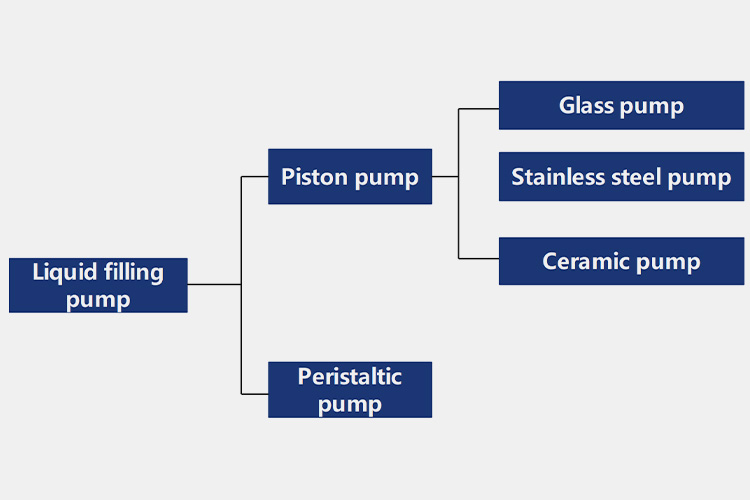
Different Types of Liquid Filling Pump
You may have heard of several types of liquid filling pumps, do you know which two types can be specifically classified? The above picture can clearly introduce different types of filling pumps for you.
(1)Piston pump
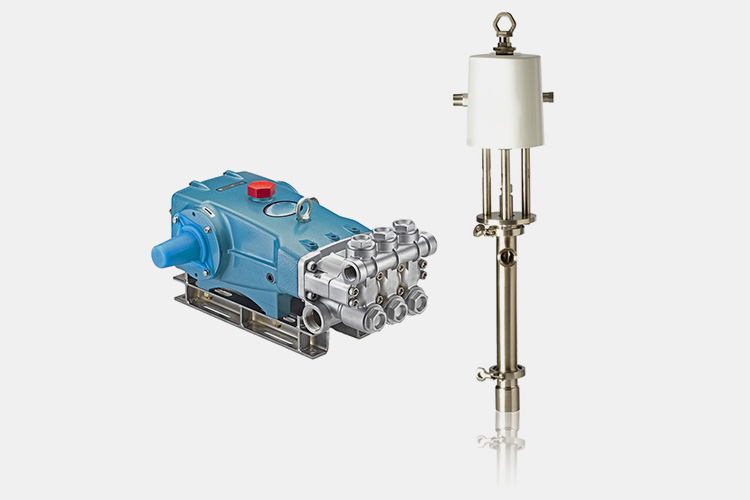
Piston Pump - Sourced: Anderson Process
Glass pump
Being made of glass material, so it is called as glass pump. It can fill high-purity and volatile liquids. Therefore, the cost is high, but it is easy to damage, o operators should use it carefully.
Stainless steel pump
Stainless steel pump is made of stainless steel material, commonly used being 304 and 316 stainless steel. Stainless steel filling pumps are relatively expensive, but have a longer service life.
Ceramic pump
Also known as ceramic filling pump, ceramic pump is a special type of pump. It is mainly used in industries such as chemical, pharmaceutical, food, beer, etc. The main materials for filling ceramic pumps include alumina, silicon nitride, and zirconia.
(2)Peristaltic pump
Also known as hose pump or peristaltic squeeze pump, peristaltic pump is a new type of industrial fluid conveying equipment. It mainly transports liquids or gases through compressed hoses or corrugated pipes. In terms of liquid transportation, it is widely used in high viscosity media and precision machining, and has high practical value.
3.What Are the Pros and Cons of Different Types of Liquid Filling Pump?
As is well known, no one is perfect, and products are not perfect either. Different types of liquid filling pumps have their own advantages and disadvantages, involving durability, cost, safety, and other aspects.
Glass pump
Glass Pump - Sourced: Aurora Pro Scientific
| Advantages | Disadvantages |
| Strong corrosion resistance:
The glass pump has high corrosion resistance, so it will not be affected by chemical properties. |
Easy to clog:
It has a small aperture, is easy to clog, and has a narrow range of use. |
| High precision:
The working accuracy is very high, which can ensure accurate measurement of liquids, especially fit for fields such as pharmaceutical production. |
Fragility:
Glass materials are susceptible to damage and breakage caused by external factors, so glass pump is easy to break.
|
| High safety:
With high safety performance, it can avoid the leakage of hazardous substances generated by chemical reactions, thereby ensuring the safety of laboratories and production workshops. |
Stainless steel pump
Stainless Steel Pump - Sourced: Pump Engineering Ltd
| Advantages | Disadvantages |
| Strong corrosion resistance:
The main materials of stainless steel pumps are 304 and 316L stainless steel, which have excellent corrosion resistance. |
High price:
Compared with ordinary cast iron pumps, stainless steel pumps are more expensive and have higher costs for some small and medium-sized enterprises. |
| Wear resistance:
Due to the advanced manufacturing process and materials used in stainless steel pumps, they have strong wear resistance. |
Pressure difference:
The compressive strength of stainless steel pumps is relatively low, which may not be suitable for some situations with high requirements. |
| Pollution free:
The stainless steel pump has been polished internally, with a smooth surface and no rust residue, which will not cause secondary pollution to the fluid. |
Ceramic pump
Ceramic Pump - Sourced: Unipretec
| Advantages | Disadvantages |
| High wear resistance:
Under high pressure and high-speed working conditions, ceramic materials can significantly reduce wear and prolong the service life of pumps. |
High cost:
Compared to traditional metal pumps, ceramic plunger pumps typically have higher costs, which may increase initial investment. |
| Corrosion resistance:
It has good resistance to most chemicals, making ceramic pumps be used for transporting corrosive media such as acid, alkali, and salt solutions. |
Fragility:
Although ceramic materials have high hardness, they are also relatively fragile. Ceramic plungers may rupture when subjected to impact or improper operation. |
| Thermal stability:
Ceramic materials have good thermal stability and can maintain their performance in high temperature environments. |
Temperature limitation:
Although ceramic materials have good thermal stability, thermal expansion may still occur at extreme high temperatures, leading to performance degradation or damage. |
Peristaltic pump
Peristaltic Pump - Sourced: Watson Marlow
| Advantages | Disadvantages |
| Low pulse:
The slow pushing method of the peristaltic pump reduces the pulse during the liquid flow process, avoids liquid loss, and makes the flow rate more stable. |
Pressure limitation:
The pressure limitation of peristaltic pumps is generally not more than 03MPa, usually between 02MPa. For some liquids that require high-pressure delivery, peristaltic pumps may not be able to meet the requirements. |
| Small interaction:
Peristaltic pumps transport liquids through rotating and squeezing pump tubes, with fewer moving parts compared to other pump devices, simple maintenance, low noise, and minimal impact on the environment. |
Vulnerable parts:
The pump tube of the peristaltic pump is a vulnerable part that needs to be replaced regularly, which may increase maintenance costs. |
| Non pollution:
The working principle of the peristaltic pump is to transport liquid by rotating and squeezing the pump pipe, which will not produce bubbles and foam, so it will not pollute the liquid. |
Low pressure:
The pressure of the peristaltic pump is relatively low, and for some liquids that require high-pressure delivery, the peristaltic pump may not be able to meet the demand. |
| Stable flow rate
The flow rate of the peristaltic pump can be controlled by adjusting the speed of the motor, thus maintaining a stable flow rate. |
4.What Are the Material Features of Different Types of Liquid Filling Pump?
Are you familiar with the material features of liquid filling pumps? Since these characteristics can influence the materials you choose, it’s crucial to have a clear understanding of them.
| Glass pump | Stainless steel pump | Ceramic pump | Peristaltic pump | |
| Hardness | 55-70HRC | 55-70HRC | 85-90HRC Maximum hardness and wear resistance | 50-65HRC |
| Thermal expansion index | Small | Big | Small | Big |
| Acid resistance | Acid-resisting | Not acid resistant | Acid-resisting | Acid-resisting |
| Fracture resistance | Alkali-resisting | Not alkali resisting | Alkali-resisting | Alkali-resisting |
| Material particle size | larger
The surface of the pump is rough after processing, and there is a large fit gap. |
Suitable
The surface is electroplated and prone to detachment. |
Minimum, nanoscale
The pump surface is the smoothest and has the smallest clearance, but it is not easy to lock up during operation. |
Minimum |
5.What Are the Filling Precision of Different Types of Liquid Filling Pump?
As manufacturers, all want pumps with good filling accuracy and choose the appropriate filling pump according to our own needs. After different years, the accuracy of the filling pump will also vary.
| Glass pump | Stainless steel pump | Ceramic pump | Peristaltic pump | |
| New | ±2% | ±0.05-0.5% | ±0.05-0.5% | ±2% |
| After one year of use | ±0.1-0.5% | ±0.05-0.5% | ||
| After three year of use | ±0.3-1.0% | ±0.1-0.5% | ||
| After five year of use | ±0.5-1.5% | ±0.1-0.5% |
The filling precision is directly related to the stability of product quality. High precision filling ensures consistent product quantity. Therefore, it is very important to have a clear understanding of the filling accuracy of the filling pump.
6.What Are the Applications of Different Types of Liquid Filling Pump?
Applications of Different Types of Liquid Filling Pump - Sourced: Makwell
For products with different capacities, different liquid filling pumps can be selected, so let’s take a look at the application of each filling pump.
| Application scope | Adaptation field | |
| Glass pump | For low value-added products with a loading capacity greater than 2ML and low precision requirements, the viscosity of the product should not be too high. | It is suitable for filling high-purity, volatile liquids in industries such as cosmetics, pharmaceuticals, and food. |
| Stainless steel pump | The product loading capacity is greater than 0.1-2000ML, with high precision requirements for loading and a wide range of product viscosity. | It is suitable for filling pumps in industries such as food, medicine, beverages, cosmetics, etc., they can also be used in some special working conditions, such as filling corrosive liquids and high-temperature liquids. |
| Ceramic pump | The product has a loading capacity greater than 0.1-2000ML, with high precision requirements for loading, and the maximum viscosity range of the product. | It is mainly used in industries such as chemical, pharmaceutical, food, beer, etc. |
| Peristaltic pump | For low value-added products with a loading capacity greater than 5ML and low precision requirements, the viscosity of the product should not be too high. | It is widely used in scientific research, pharmaceuticals, chemical industry, environmental protection, beverages, food, printing and other fields. |
7.What Is the Working Principle of Different Types of Liquid Filling Pump?
Due to their different working principles, they can be divided into plunger pumps and peristaltic pumps. What are the differences between these two types of pumps?
Piston pump
Working Principle of the Piston Pump
The working principle of a piston pump is to achieve fluid delivery by reciprocating the plunger in the pump chamber. When the piston moves forward, the volume inside the pump chamber decreases, causing the fluid to be under pressure and flow towards the outlet direction. When the piston moves backwards, the volume inside the pump chamber increases, causing the fluid to receive suction and enter the pump chamber from the inlet.
Peristaltic pump
Working Principle of the Peristaltic Pump - Sourced: VKPAK
The working principle of a peristaltic pump is to transport fluid by compressing or releasing a hose. When the hose is compressed, the volume inside the hose decreases, causing the fluid to be under pressure and flow towards the outlet. When the hose is released, the volume inside the hose increases, causing the fluid to experience suction and enter the hose from the inlet.
8.What Is the Lifespan of Different Types of Liquid Filling Pump?
Different types of liquid filling pumps have different lifespan due to differences in materials and other factors.
| Glass pump | Stainless steel pump | Ceramic pump | Peristaltic pump | |
| Lifespan (imported pump) | About 3 months (Italian products) | ≤3 years
(Germany products) |
≥6 years | Replace the silicone hose every 1-3 months |
| Lifespan (Domestic pump) | About 3 months | ≤1 year | ≥6 years | Replace the silicone hose every 1-3 months |
9.How to Choose Suitable Liquid Filling Pump?
Choosing the appropriate liquid filling pump can achieve twice the result with half the effort, improve one’s production efficiency, and achieve a bountiful harvest of benefits.
Liquid properties
Liquid Properties - Sourced: Oinoteka
When choosing a pump, the first thing to consider is the properties of the liquid, such as viscosity, particle content, etc. Different types of pumps need to be selected for liquids of different properties to ensure effective delivery. As detailed in question 6, if the liquid viscosity is high, a ceramic pump can be chosen.
Liquid traffic requirements
Liquid Traffic Requirements - Sourced: Asset Packaging Machines
Determine the required flow range based on production needs, and then select the pump that can meet this excellent flow requirement. Excessive or insufficient traffic may affect production efficiency and product quality. If the flow rate is high, ceramic pumps and stainless steel pumps can be chosen.
Precision requirements
For products that require high-precision measurement, such as drugs, cosmetics, etc., pumps with higher precision should be selected, such as plunger pumps or peristaltic pumps. If high precision is required, stainless steel pumps and ceramic pumps can be chosen.
Maintenance and cleaning
The maintenance and cleaning of the pump are also factors that need to be considered when choosing. You can choose liquid filling pumps that are easy to clean and maintain can save production costs and improve equipment lifespan.
Conclusion
Filling pumps play an important role in the entire liquid filling process. Do you feel confused when facing different types of liquid filling pumps? After reading this article, do you have a clear idea? If you have any questions about which liquid filling pump to choose, you can contact AIPAK at any time.
Don't forget to share this post!
Vial Filling Machine Related Posts
Vial Filling Machine Related Products
Vial Filling Machine Related Videos
CONTACT US
Tell us your raw material and project budget to get quotations within 24 hours.
WhatsApp Us: +86 181 6426 8586
Want the best price & newest pharmaceutical machinery buying guide,tips and trends sent straightly to your box?Sign up for AIPAK’s monthly newsletter,we’re free for your consultation and Offer you the most suitable solutions!
The Buyer's Guide
- Capsule Filling Buyer's Guide
- Blister Packaging Buyer's Guide
- Tablet Counting Buyer's Guide
- Tube Filling Buyer's Guide
- Cartoning Buyer's Guide
- Gummy Making Buyer's Guide
- CO2 Extraction Buyer's Guide
- Empty Capsules Buyer's Guide
- Suppository Filling Buyer's Guide
- Tablet Coating Buyer's Guide
- Tablet Press Buyer's Guide
- Softgel Encapsulation Buyer's Guide
Most Popular
- 7 Importance Of Pharmaceutical Packaging In Different Applications You Must Know
- 6 Advantages You Must Know About Tablet Counting Machine
- 8 Advantages of Blister Packaging You Must Know
- 6 Critical Applications of Automatic Capsule Filling Machine
- 6 Stations You must Know to Improve the Filling Quality of Automatic Capsule Filling Machine
 Tell us your material or budget, we'll reply you ASAP within 24 hours
Tell us your material or budget, we'll reply you ASAP within 24 hours

